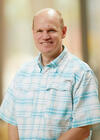In The News: Department of Physics and Astronomy

As the coronavirus pandemic continues to take terrible tolls on human lives and cause economic hardship, scientists around the world scramble for a COVID-19 vaccine. They include Michael Pravica, a UNLV physics professor.

A lot of astronomers around the world are starting to see spots, and they say it's a good thing.

You have to feel for the little fella.
Pluto doesn’t have the bling of Saturn’s rings. It lacks the famed little green men of Mars. It certainly isn’t as much fun to say as Uranus.
Jason Steffen, professor at the University of Nevada Las Vegas joins The Matt Bubala Show to discuss all things airplanes, updates on the Kepler Mission and future projects. Tune in to the full conversation here.
The signals have long-baffled astronomers since their discovery six years ago as their origin had been a total mystery. But now, one sporadic radio burst source found millions of lightyears away has a very specific pattern. Though scientists still do not know the cause of such radio bursts, it has been found that the source is transmitting signals that are hitting Earth every 16 days without fail.
For years, astronomers have been searching for patterns in strange blasts of radio waves coming from space. These fast radio bursts (FRBs) had seemed totally random, but for the first time we have seen an FRB that turns off and on again at regular intervals. Now we just need to figure out why.

Astronomers have identified the first reliable pattern of a fast radio burst (FRB) source in deep space, but still don't know what causes the phenomenon.

The whole concept of an electromagnetic pulse sounds like science fiction, but they are very real.

No one enjoys boarding an airplane. It’s slow, it’s inefficient, and often undignified. And that’s without even getting into the ethical quandary of so-called gate lice, the anxious passengers who cluster at the gate before their group is called. But at least one part of the process doesn’t need to be disrupted. When it comes to shunting slow-moving passengers to the front of the queue, such as those requiring assistance or with small children, the airlines have it exactly right.

A team of researchers led from Norway used space-time geometry techniques to explore the factors that lead to a speedy take-off or an agonising delay on the tarmac.
Commercial airlines often prioritize boarding for passengers traveling with small children, or for those who need extra assistance—in other words, those likely to be slower to stow their bags and take their seats—before starting to board the faster passengers. It's counter-intuitive, but it turns out that letting slower passengers board first actually results in a more efficient process and less time before takeoff, according to a new paper in Physical Review E.
Molecules containing noble gases shouldn’t exist. By definition, these chemical elements — helium, neon, argon, krypton, xenon and radon — are the party poopers of the periodic table, huddling in the rightmost column and refusing to make molecules. Indeed, no one has ever seen any naturally occurring noble gas molecules on Earth. Earlier this decade, though, astronomers accidentally discovered one of these aloof elements in molecules in space.

